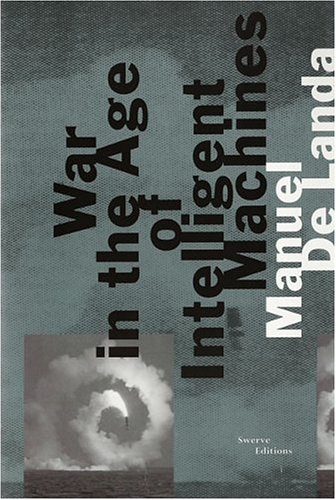Mitchell Whitelaw: Metacreation: Art and Artificial Life (2004)
Filed under book | Tags: · aesthetics, artificial intelligence, artificial life, cellular automata, genome, interactivity, simulation

“Artificial life, or a-life, is an interdisciplinary science focused on artificial systems that mimic the properties of living systems. In the 1990s, new media artists began appropriating and adapting the techniques of a-life science to create a-life art; Mitchell Whitelaw’s Metacreation is the first detailed critical account of this new field of creative practice.
A-life art responds to the increasing technologization of living matter by creating works that seem to mutate, evolve, and respond with a life of their own. Pursuing a-life’s promise of emergence, these artists produce not only artworks, but generative and creative processes: here creation becomes metacreation.
Whitelaw presents a-life art practice through four of its characteristic techniques and tendencies. “Breeders” use artificial evolution to generate images and forms, in the process altering the artist’s creative agency. “Cybernatures” form complex, interactive systems, drawing the audience into artificial ecosystems. Other artists work in “Hardware,” adapting Rodney Brooks’s “bottom-up” robotics to create embodied autonomous agencies. The “Abstract Machines” of a-life art de-emphasize the biological analogy, using techniques such as cellular automata to investigate pattern, form and morphogenesis.
In the book’s concluding chapters, Whitelaw surveys the theoretical discourses around a-life art, before finally examining emergence, a concept central to a-life, and key, it is argued, to a-life art.”
Publisher MIT Press, 2004
ISBN 0262232340, 9780262232340
281 pages
PDF (updated on 2012-8-11)
Comment (0)Ken Goldberg, Roland Siegwart (eds.): Beyond Webcams: An Introduction to Online Robots (2002)
Filed under book | Tags: · artificial intelligence, engineering, internet, remote control, robotics, simulation, technology, telepresence

“Remote-controlled robots were first developed in the 1940s to handle radioactive materials. Trained experts now use them to explore deep in sea and space, to defuse bombs, and to clean up hazardous spills. Today robots can be controlled by anyone on the Internet. Such robots include cameras that not only allow us to look, but also go beyond Webcams: they enable us to control the telerobots’ movements and actions.
This book summarizes the state of the art in Internet telerobots. It includes robots that navigate undersea, drive on Mars, visit museums, float in blimps, handle protein crystals, paint pictures, and hold human hands. The book describes eighteen systems, showing how they were designed, how they function online, and the engineering challenges they meet.”
Publisher MIT Press, 2002
ISBN 0262072254, 9780262072250
331 pages
PDF (updated on 2012-11-4)
Comment (0)Manuel DeLanda: War in the Age of Intelligent Machines (1991)
Filed under book | Tags: · abstract machine, arpanet, artificial intelligence, expert systems, machine, military, robots, technology, turing machine, war

“In the aftermath of the methodical destruction of Iraq during the Persian Gulf War, the power and efficiency of new computerized weapons and surveillance technology have become chillingly apparent. For Manuel De Landa, however, this new weaponry has a significance that goes far beyond military applications: he shows how it represents a profound historical shift in the relation of human beings both to machines and to information. The recent emergence of “intelligent” and autonomous bombs and missiles equipped with artificial perception and decision-making capabilities is, for De Landa, part of a much larger transfer of cognitive structures from humans to machines in the late twentieth century.
In this remarkable book, De Landa provides a rich panorama of these astonishing developments. He details the mutating history of information analysis and machinic organization from the mobile siege artillery of the Renaissance, the clockwork armies of the Thirty Years War, the Napoleonic campaigns, and the Nazi blitzkrieg up to present-day cybernetic battle-management systems and satellite reconnaissance networks. Much more than a history of warfare, De Landa provides an unprecedented philosophical and historical reflection on the changing forms through which human bodies and materials are combined, organized, deployed, and made effective.”
Publisher Zone Books, 1991
ISBN 0942299752
271 pages
PDF (15 MB, updated on 2016-7-18)
Comment (0)
